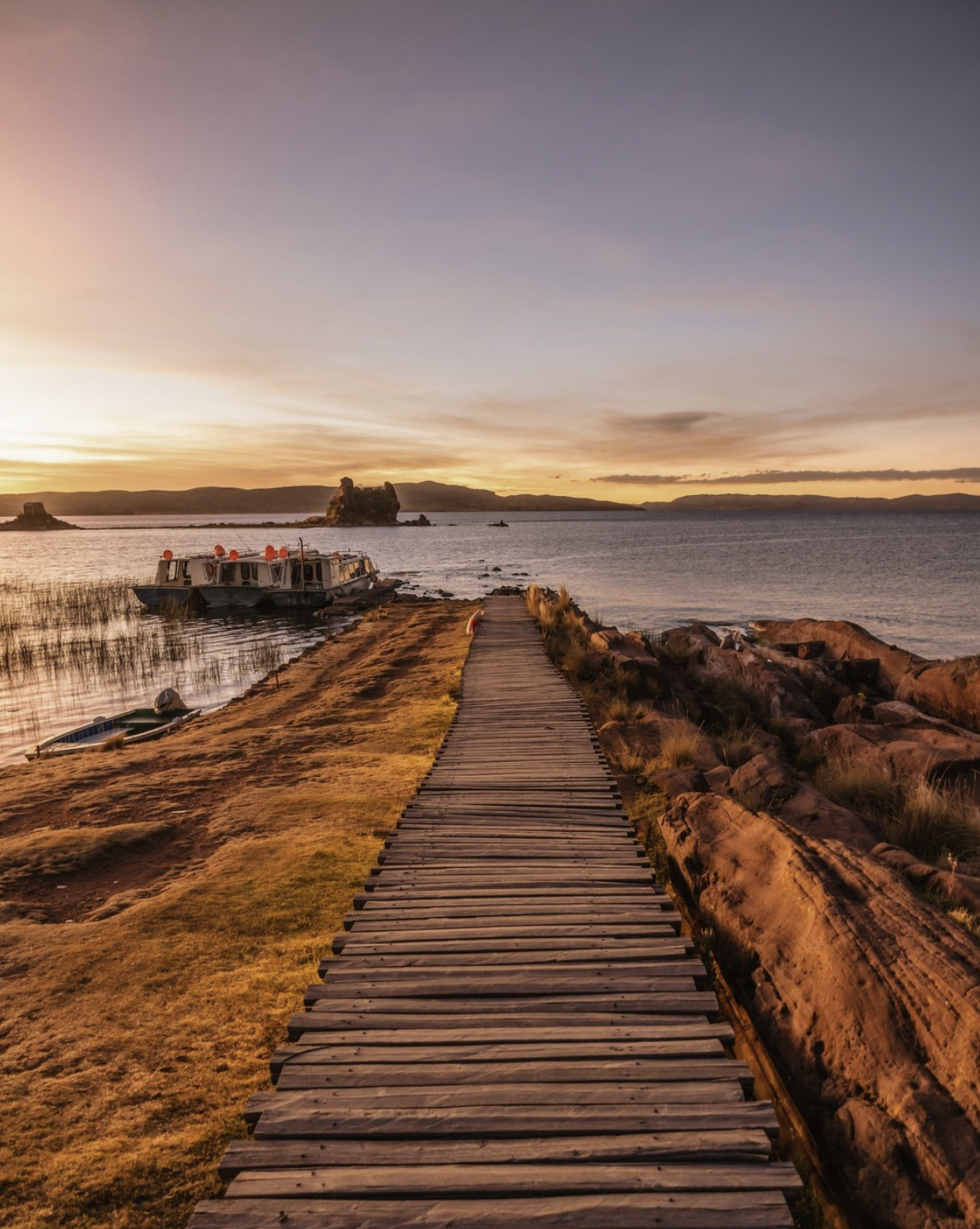My last trip to Peru, back in March this year, was one of the most unforgettable journeys I’ve taken.
We landed in Lima on a humid March afternoon, just as the summer sun was beginning to loosen its grip on the coast. By the time we reached the Sacred Valley a few days later, the air felt different—clearer, quieter, as if the entire country was taking a long, luxurious exhale.
So many travelers plan their trip to Peru during the dry season (May to October), believing that this is the only good time to go. But if there’s one thing our latest journey confirmed, it’s this: Peru in March, April, and May is not just a “shoulder season” or a lesser-known window. It’s a secret season — a soulful, slower time that lets you experience the country with fewer tourists, richer colors, and an intimacy that the high season just can’t offer.
If you’re visiting Peru in March, April, or May and you are wondering whether Peru in autumn is a good idea, you’re in the right place. In this travel guide, I’ll explain what to expect, where to go, and why this is one of our favorite times to help clients design a custom-made journey through the Andes, the rainforest, and the coast.
And if you’re someone who appreciates culture, storytelling, and authenticity over box-checking, then this is your season.
Peru in Autumn: March, april and may Travel Guide

How to Plan your trip to South America? Get our Free Luxury travel guide. Curated by us, Clara and Maria.
Find Here all you need to know for the best trip to South America.
Why March to May Is a Great Time to Visit Peru
Here’s something a lot of travelers don’t realize right away: the seasons in South America are flipped from what you’re used to in the U.S. or Europe. So while it might be springtime back home in March, in Peru it’s actually the beginning of autumn. That shift changes everything — from the colors of the landscapes to the rhythm of daily life.
And honestly? It’s part of what makes traveling to Peru in March, April, or May so unexpectedly special.
I remember waking up early in Ollantaytambo one morning in late March, stepping out onto the terrace of our lodge, and seeing the valley wrapped in golden mist. The air was crisp, but the sun was already warming the stone pathways. Locals were setting up market stalls, schoolchildren were walking to class, and everything moved with a kind of peaceful rhythm you rarely experience during the high season. It felt like we were catching the country in a quieter, more personal moment—and that made it all the more magical.
It might surprise you to hear that March marks the end of the wettest season in the Andes. By the second or third week of the month, the heavy rains begin to ease. Trails start to dry out. The clouds lift. The mountains, freshly washed, glow in deep greens under brilliant blue skies.
In the Sacred Valley and Cusco region, March and April bring cooler temperatures, early mornings wrapped in mist, and afternoons full of sunshine. It’s also one of the most photogenic times to see Machu Picchu—with fewer people, rich vegetation, and dramatic light.
By May, you’re entering what many consider the perfect time to explore the highlands. It’s still technically the shoulder season, but with clearer skies, good weather, and trails like the Inca Trail and Salkantay Trek in great condition, the experience feels a lot like peak season—minus the crowds.
For travelers heading into the Amazon jungle near Puerto Maldonado or Iquitos, March is considered the high-water season. This means you can explore more of the rainforest by boat, gliding into flooded tributaries and deeper into the jungle. It’s a fantastic time to witness wildlife and the vibrant ecosystem of the Amazon basin.
Peru in Autumn: What the Weather Feels Like in Peru in March, April, and May
Let’s talk about weather conditions.
Peru’s geography is famously diverse, so temperatures and rain patterns vary widely depending on whether you’re in the coastal regions, the Andean highlands, or the rainforest.
In Lima and the Pacific coast, the summer months stretch into early March, offering warm weather and sunny days. You might even squeeze in a beach afternoon if you’re on the northern coast near Mancora. By April and May, the coastal areas begin to cool, with more cloud cover and higher humidity, but little rainfall.
In the Andes Mountains—think Cusco, the Sacred Valley, Lake Titicaca—March is the end of the wet season. Expect some residual rain showers early in the month, but also stretches of clear skies and lush, green landscapes. Average temperatures range from 10 to 20°C (50 to 68°F), and it cools considerably at higher altitudes.
By May, you’re entering one of the driest months of the year. It’s a sweet spot: great weather, clear trails, and smaller crowds. This is the calmest month before peak season begins in June.
In the Amazon, the water levels are still high through March and April, offering a unique perspective of the rainforest. The higher humidity and occasional heavy rainfall are part of the experience, but they’re balanced by the access to otherwise unreachable areas. May sees a transition toward the low-water season, with more walking trails becoming accessible.
Best Places to Visit in Peru in March, April and May: Regional Highlights from Our Autumn Trip
Let me take you back to a few moments from our last trip that I still think about weeks later. If you’re planning your own adventure in Peru during the autumn months, these are the places and experiences you truly shouldn’t miss. And I’ve added a few expert local tips along the way to help make your trip even more special
WHAT TO DO IN PERU IN MARCH, APRIL OR MAY
Cusco & the Sacred Valley in Autumn: Mach, april and May
You can’t go to Peru and skip the Sacred Valley — especially in March and April. It’s simply one of the most beautiful places I’ve ever been. I remember sitting with my notebook at a tiny cafe in Urubamba, watching clouds drift across the mountains while sipping the best muña tea I’ve ever had. There’s something in the air there — maybe the altitude, maybe the energy — that slows you down in the best way.
One afternoon, we stopped at a local chichería near Maras. The sign was handwritten in red paint, and inside, a Quechua woman served us fresh chicha de jora and roasted corn, smiling as she showed us the giant clay vessels where the brew ferments. These are the moments that don’t show up on most itineraries, but they’re the ones you carry home.
Expert tip: Stay at least three nights in the Sacred Valley to adjust to the altitude and explore at a relaxed pace. And if you can, visit on a market day — the textiles and colors are unforgettable.
The Sacred Valley was perhaps the most magical during this season. The Inca terraces were bursting with green, the Urubamba River ran high and fast, and the air smelled like wet earth and eucalyptus. The Sacred Valley was perhaps the most magical during this season. The Inca terraces were bursting with green, the Urubamba River ran high and fast, and the air smelled like wet earth and eucalyptus. We stayed at Tambo del Inka, a luxury lodge nestled in the heart of the Sacred Valley. Each morning, we woke to the sound of the river rushing nearby and the sight of clouds slowly lifting off the mountains. The air was rich with the scent of eucalyptus and wood smoke, and the calm elegance of the hotel made it the perfect base for slow, thoughtful exploration.
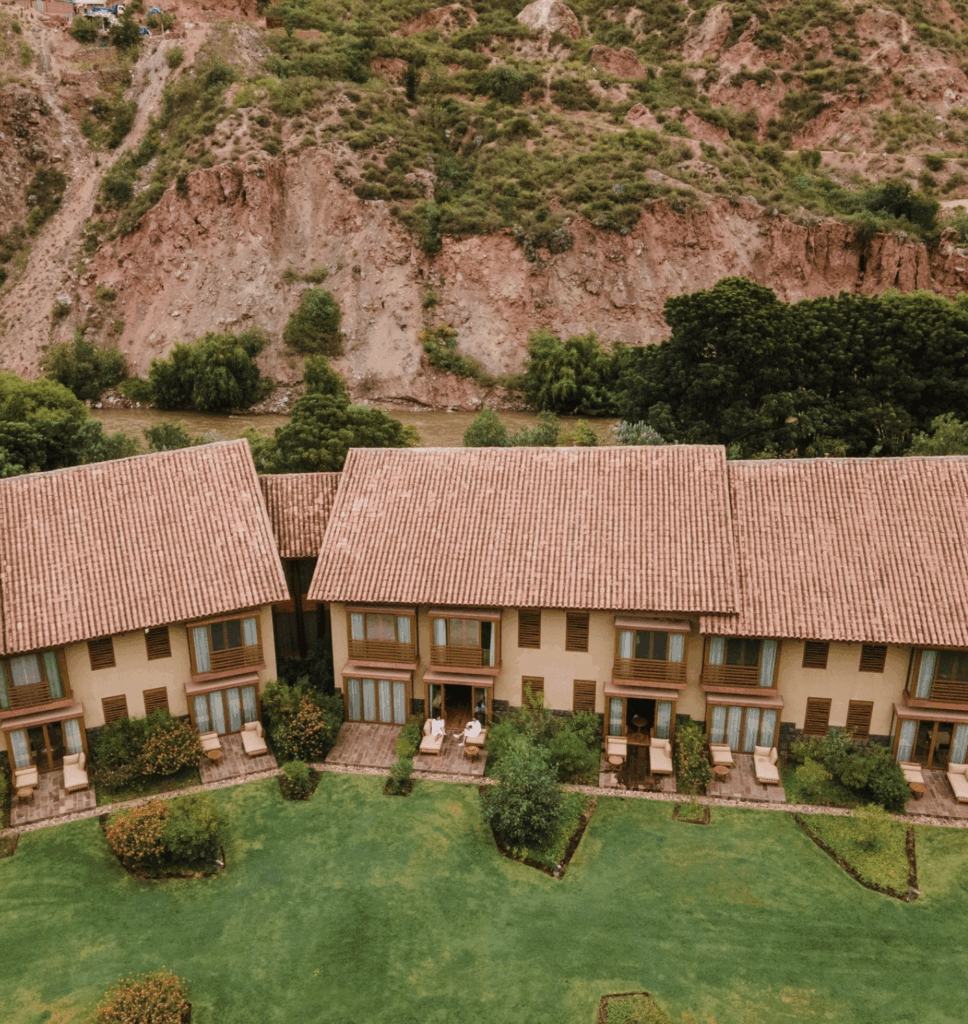
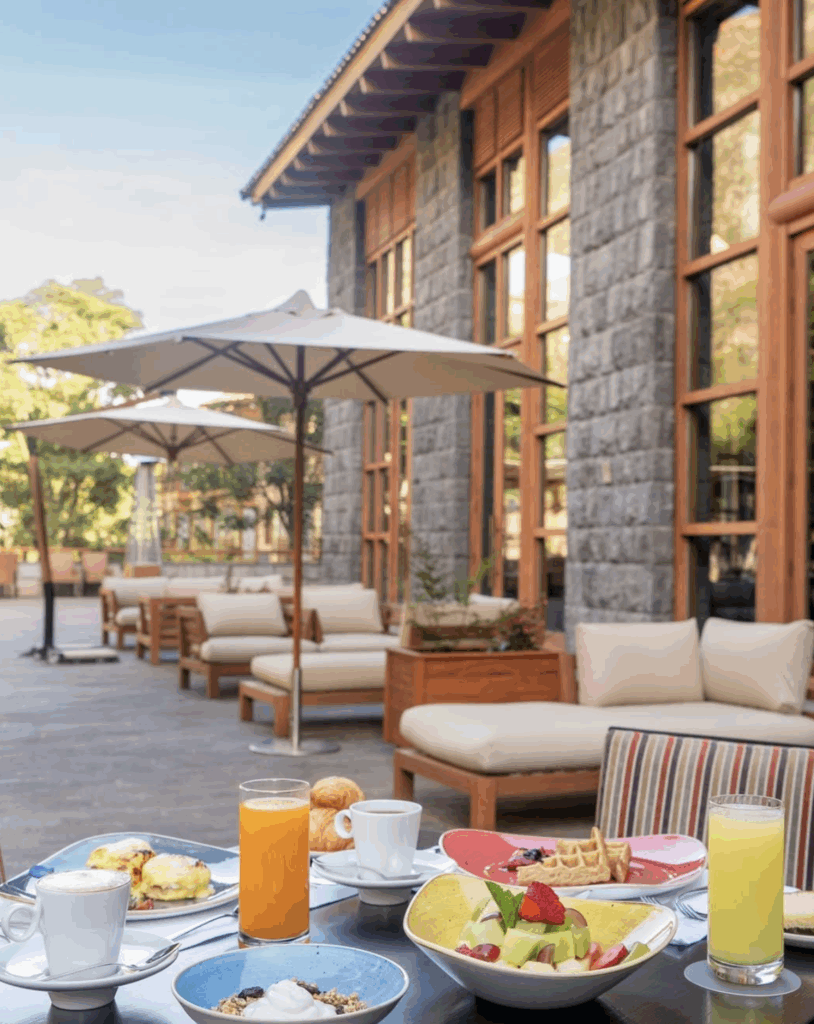
This region in March and April feels like it belongs to the locals again. With fewer tourists, you can slow down and truly connect with the place. Visiting archaeological sites like Moray, Pisac, and Chinchero is a completely different experience when you have space to absorb their beauty.
READ MORE: The Best Places to Visit in Sacred Valley Peru
Machu Picchu in Autumn: March , April and May
Machu Picchu
We visited Machu Picchu in late March. A morning mist veiled the citadel when we arrived, but within an hour, the clouds lifted to reveal those famous green terraces and stone temples gleaming in the sun. It was quiet. Peaceful. Almost reverent. There were moments when we found ourselves completely alone on some of the upper terraces, gazing down into the valley and listening to nothing but the wind. That silence, combined with the majesty of the site, is something I still carry with me.
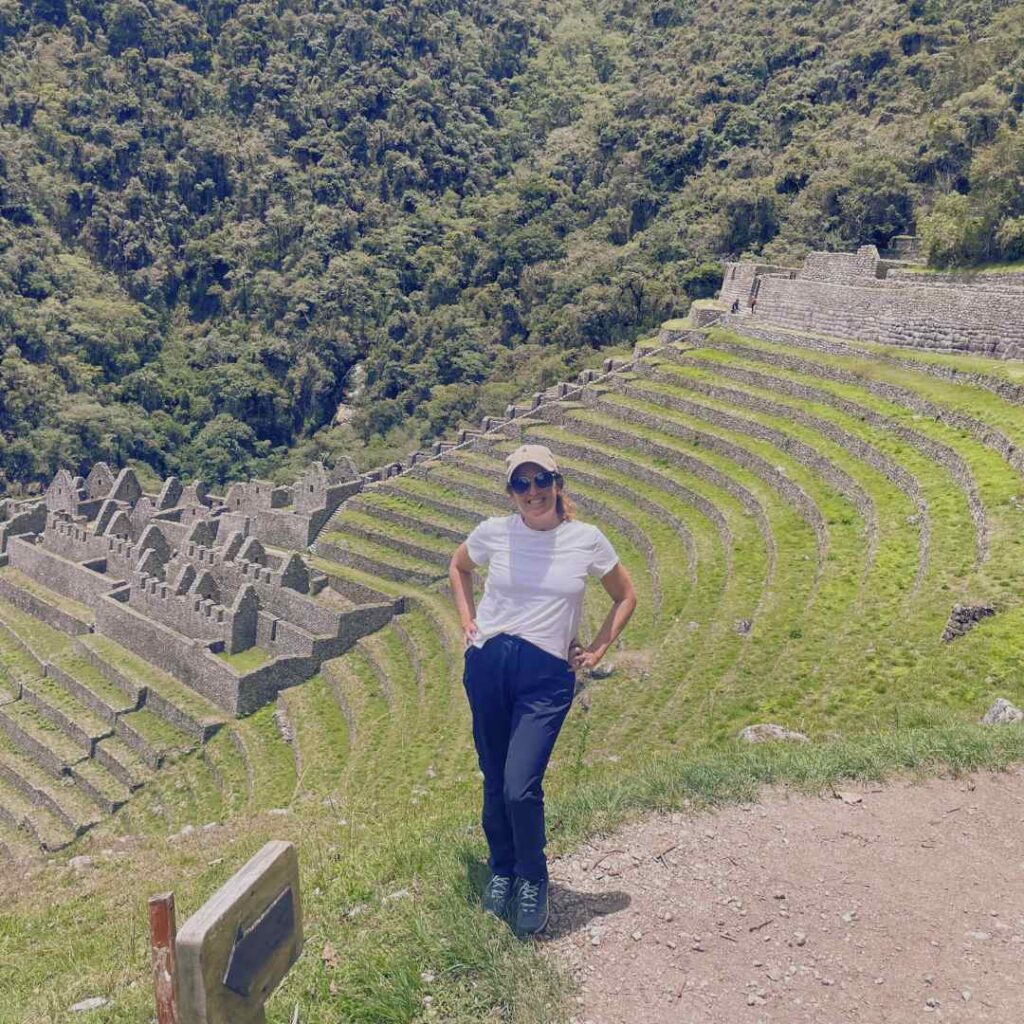
The chance of rain is still present in early March, but it drops significantly by mid-month. If you’re hiking the Inca Trail or taking a day trip by train, the weather conditions are generally favorable—especially in April and May, with good weather and fewer people than in the peak season of June through August. And the light! There’s something about the way the late-morning sun hits the stone walls during this time of year that makes it feel like the site is waking up with you.
If you’re planning your visit to Machu Picchu, there are a few things that can make the experience even more meaningful—from knowing the best time of day to enter, to choosing the right circuit and guide.
I wrote more about all of this in our in-depth article: 👉 Things to Do in Machu Picchu That Will Make Your Trip Unforgettable
It’s full of local insights and ideas to help you make the most of this iconic destination.
Lake Titicaca in Autumn
This high-altitude lake — the highest navigable one in the world — is more than just a scenic stop. In April, the skies above the lake are crystal clear, and the sunlight sparkles across the water like glass. Our local boatman named Javier took us to the Uros floating islands. As we drifted across the lake, he told us stories of growing up on the water, how the islands are built from layers of totora reeds, and how they need to be constantly rebuilt. That boat ride was slow, quiet, and deeply moving.
We stayed at the beautiful Titilaka Lodge, a remote lodge, set on a private peninsula with panoramic views of the lake in every direction. Waking up there was something else — sunlight glinting off the water, the sound of lapping waves, and a horizon that seemed to go on forever. The lodge itself blends comfort and culture beautifully: contemporary design, warm hospitality, and excursions led by locals who know the lake like an old friend. One afternoon, we took a guided walk through the surrounding Aymara communities and were invited into a family home for lunch — a meal of quinoa soup, trout, and boiled potatoes cooked over a wood fire. It was simple, generous, and unforgettable.
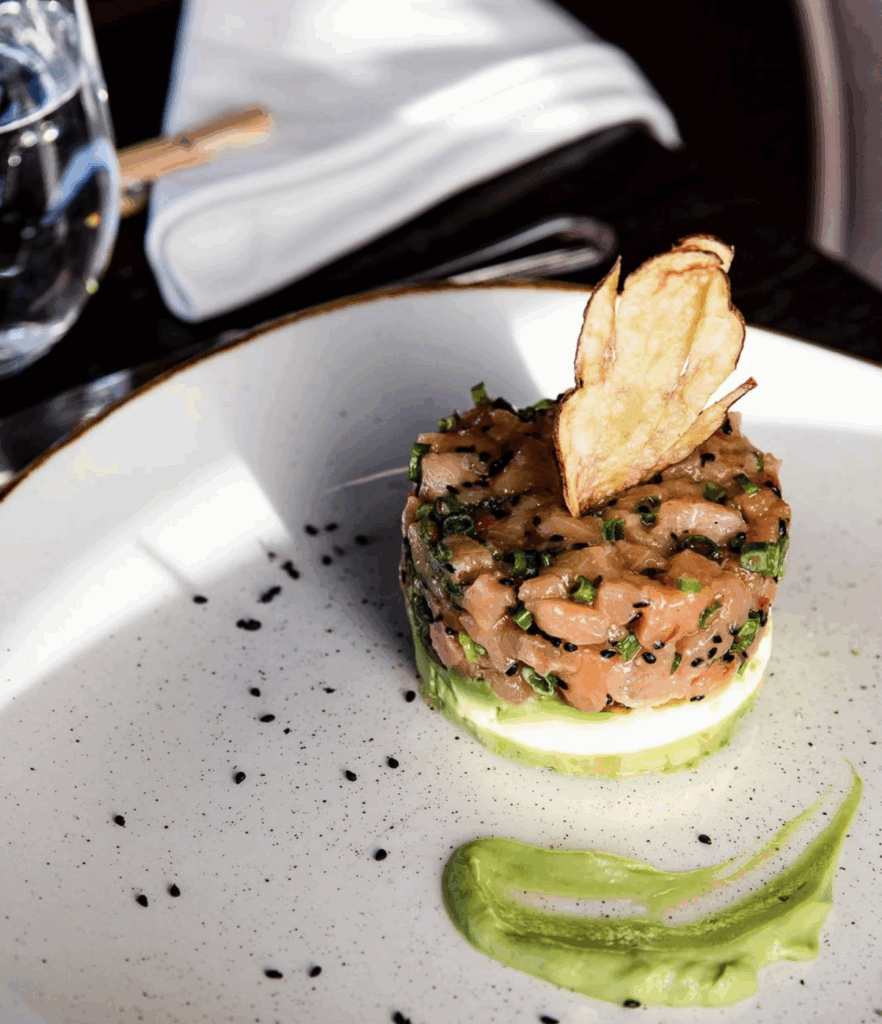
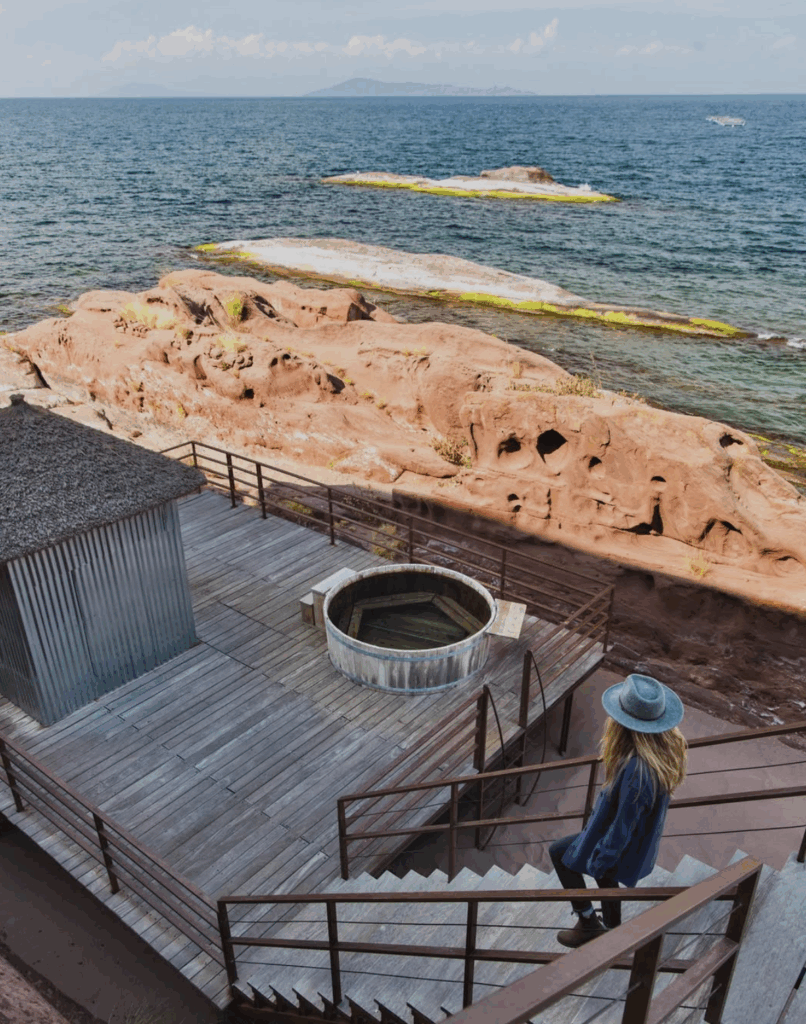
Expert tip: Bring layers — it gets chilly even on sunny days. And if you’re staying overnight on the lake, book a local guesthouse or a stay like Titilaka to support the community and get a more personal connection to life on the islands.
Amazon Rainforest in Autumn
If you’ve ever dreamed of exploring the Amazon, autumn in Peru — March through May — is one of the best times to go. This is the high-water season, which means many areas that are unreachable during other times of year are now accessible by boat. You’ll glide silently through flooded forests, past trees that grow right out of the water, and deeper into parts of the rainforest that few get to see. The jungle is alive with sound: cicadas, birds, monkeys, frogs — it’s like the forest itself is talking. With the rise in water levels also comes an incredible chance to see wildlife, from sloths and capybaras to the elusive pink river dolphin. There’s something magical about seeing this part of the world from the water — it’s a completely different perspective, peaceful and immersive.
The Amazon in March and April is a world of water and sound. We took the Delfin Amazon Cruise, a small luxury river cruise that winds through the heart of the Peruvian Amazon. The only way in was by boat — two hours upriver from Puerto Maldonado. On the way, we passed kids swimming in the river, herons standing on tree limbs, and once — I swear — a flash of pink from a river dolphin.
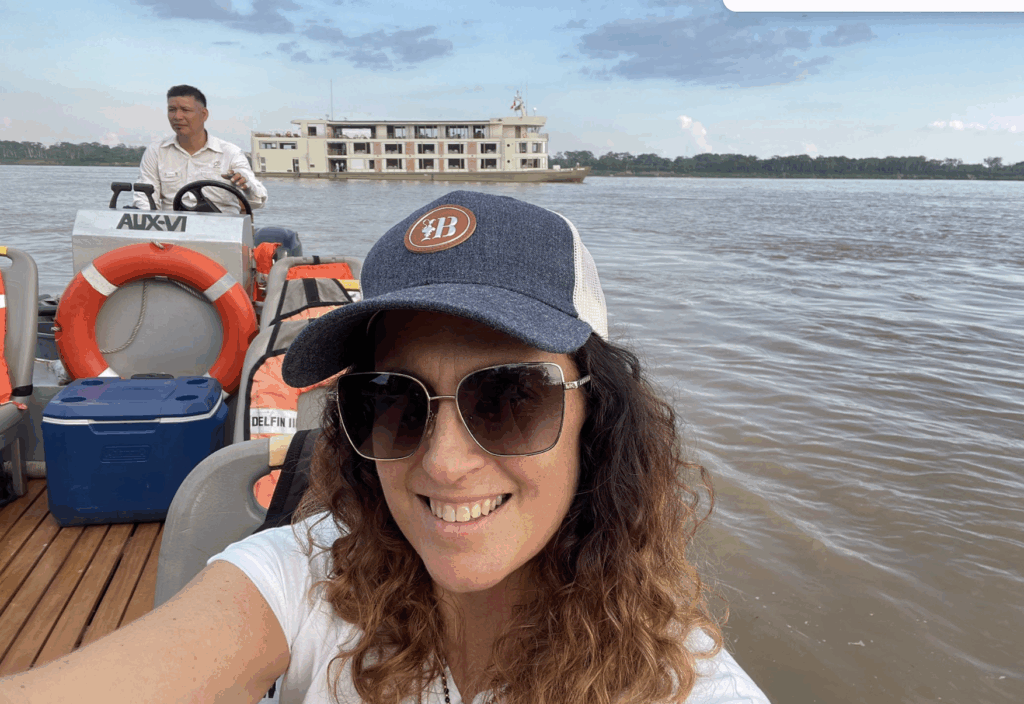
At night, we sat on the porch of our cabin, listening to the symphony of the jungle. I spoke with our local guide, Rocío, about her life growing up in the rainforest. Her knowledge of the plants and animals was incredible — she pointed out things I never would have noticed on my own, like the scent trails ants use or the call of the howler monkeys at dawn. We even tracked macaws to a clay lick one misty morning and spent over an hour in total silence watching them arrive, one by one.
One evening, as the sun was dipping low, we floated slowly down a tributary, our boat silent except for the occasional splash of a turtle or monkey. The water mirrored the canopy above, and for a moment, the whole world felt suspended in gold.
Expert tip: This is the best time for boat-based excursions due to high water levels. Pack light, breathable clothes and be ready for both sun and rain. And leave space in your days to just listen — the jungle has a rhythm of its own.
If you’ve ever wanted to experience the Amazon rainforest from the water, March and April are your moment. In fact, for an even deeper immersion, I recommend considering a small luxury river cruise like the Delfin Amazon Cruise. It’s a completely different way to see the rainforest — floating through one of the most biodiverse regions in the world, with expert naturalists, gourmet meals, and daily excursions into the forest and onto the water.
I wrote more about my experience here: 👉 Sailing the Peruvian Amazon on the Delfin Cruise
If you’re dreaming of experiencing the Amazon with both comfort and depth, this might be your perfect match!
Peru Pacific Coast in Autumn: Paracas
March is the final stretch of summer along the coast of Peru, and there’s still a lazy, golden warmth in the air. We spent a couple of nights in Paracas, and one of my favorite evenings was eating fresh ceviche at a beachside restaurant while watching the sun set over the Pacific. The breeze, the salty air, the simplicity of it — that’s what coastal Peru is all about.
From there, we took a boat out to the Ballestas Islands, sometimes called the “poor man’s Galápagos.” It’s an early morning trip, but well worth it — we saw sea lions, penguins, and endless flocks of birds soaring overhead. I still remember the laughter on the boat as we tried to photograph them.
Expert tip: Travel earlier in the day before the winds pick up. And take some time to explore the nearby desert dunes — it’s an otherworldly contrast to the sea.
If you’re including Lima, Paracas, or the Ballestas Islands on your route, March is the last month of truly warm weather. The coast of Peru shifts from high temperatures to milder ones in April and May, with the return of the foggy garúa mornings in Lima.
Semana Santa or Holy Week in Peru
March is home to one of the most important celebrations in Peru: Semana Santa (Holy Week).
The Cusco region in particular hosts beautiful religious processions blending Andean and Catholic traditions. Statues of saints are carried through cobblestone streets under a sea of flower petals, incense clouds the air, and entire neighborhoods gather in reverent silence to watch. There’s something deeply touching about witnessing this devotion firsthand, especially against the backdrop of ancient Inca walls. If you’re traveling in late March or early April, experiencing Semana Santa is a rare and moving cultural experience that lingers in your memory.
Beyond the religious celebrations, this season is rich with agricultural abundance. Markets in autumn are bursting with harvest: giant ears of corn with multi-colored kernels, piles of native potatoes in every shape and hue, shiny golden quinoa, and fruits you’ve likely never tasted — lucuma, chirimoya, and the tart, electric-orange tumbo. The colors, textures, and smells are intoxicating.
One of our favorite mornings in Cusco was spent with a local chef named Ana Lucía. We met early at the San Pedro market, which was already buzzing with activity. She showed us which potatoes are best for soups, let us sample a dozen kinds of fruit, and explained the difference between cacao and chocolate as we passed by an artisanal stall. After the market, we walked to her home kitchen just outside the center, where we spent the afternoon preparing a traditional lunch. We made chupe de quinua, a hearty Andean soup; grilled alpaca with native herbs; and for dessert, a simple flan infused with coca leaf. More than the food itself, what stayed with me was Ana Lucía’s pride in her culinary heritage and her warm, effortless hospitality.
Expert tip: Always leave room in your itinerary for these unscripted, local experiences. They often become the most meaningful parts of your journey. And if you’re in Cusco during Holy Week, ask your guide which neighborhood procession is the most heartfelt — sometimes the smaller, lesser-known ones are the most powerful.
Sample Autumn Itinerary We Recommend to Visit Peru in March
A Soulful Journey Through Peru
Here’s a suggested 12-day journey we’d design for our travelers this time of year:
Day 1-2: Arrive in Lima. Rest and enjoy the coastal cuisine.
Day 3-5: Fly to Cusco. Adjust to altitude. Begin exploring Sacred Valley: Pisac, Ollantaytambo, and local artisan villages.
Day 6: Visit Machu Picchu (by train or part of a multi-day trek). Overnight in Aguas Calientes.
Day 7: Return to Sacred Valley and travel to Cusco city.
Day 8-9: Enjoy Cusco’s culture, museums, and San Pedro market.
Day 10-12: Fly to Puerto Maldonado for a stay in a jungle eco-lodge. Return to Lima.
All customizable, of course!
This itinerary is especially well-suited for autumn because it takes full advantage of Peru’s shifting seasons. March through May offers a beautiful balance: the Andes are fresh and green after the rains, Machu Picchu is quieter and more serene, and the Amazon is at its most navigable and alive. You’ll experience the contrast of Peru’s three main regions — coast, highlands, and jungle — at a time when each is revealing a softer, more personal side. Whether you’re sipping pisco in Lima, breathing in the eucalyptus-scented air of the Sacred Valley, or listening to the jungle sing at night, this journey lets you connect deeply with the rhythm of the land and its people.
Keep Exploring
📥 Want more tips like this? Download our South America Travel Guide
You might also enjoy these blog posts on our site:
Best Summer Destinations in South America: January – March
2 Weeks in Peru Our more Charming itinerary
Ready to Plan Your Autumn Journey to Peru?
If you are planning to travel to Peru in March, April, or May, we’d love to hear your story and help you design a journey that feels just right. Book a call with us, and let’s create something beautiful together.
Because Peru in March isn’t just a good time to visit.
It might just be the best time of all.
Since 2007, we’ve been designing custom journeys through South America, built from scratch around each traveler’s style, rhythm, and dreams. When you’re ready, we’d love to do the same for you.
📞 Start Here to book your consultation call with us, and let’s begin imagining what your summer in South America could look like.
We can’t wait to dream this up with you.
Warmly,
María ✨
Co-founders, Across South America
P.S. Want to see what it’s really like to travel with us? Take a look at what our travelers have to say.
FAQ for the Best Autumn Vacations In Peru
Is March a good time to travel to Peru?
Yes, March is a great time to visit Peru, especially for those seeking fewer crowds and lush green landscapes. It’s the tail end of the rainy season in the Andes, making it ideal for visiting Machu Picchu with fewer tourists and dramatic misty views. Coastal areas like Lima are still warm, and the Amazon is vibrant and accessible by boat during high-water season.
Is Machu Picchu worth it in March?
Absolutely. Machu Picchu in March is lush, peaceful, and far less crowded than during peak season. While there’s still a chance of rain, especially early in the month, the dramatic cloudscapes and vibrant greenery make it one of the most photogenic and serene times to visit.
Yes, March is a great time to visit Peru, especially for those seeking fewer crowds and lush green landscapes. It’s the tail end of the rainy season in the Andes, making it ideal for visiting Machu Picchu with fewer tourists and dramatic misty views. Coastal areas like Lima are still warm, and the Amazon is vibrant and accessible by boat during high-water season.
Is Machu Picchu closed in March?
No, Machu Picchu is not closed in March. While the Inca Trail is closed for maintenance during February, it reopens in March. Trains and alternate trekking routes are fully operational, making it a great time to visit with fewer tourists.
What’s the best month to go to Peru?
The best month to visit Peru often depends on your travel goals. May is widely considered ideal for the Andes and Machu Picchu, offering dry weather and clear skies. But March through May is perfect for those who want vibrant green landscapes, fewer crowds, and a more relaxed travel experience across Peru’s diverse regions.
